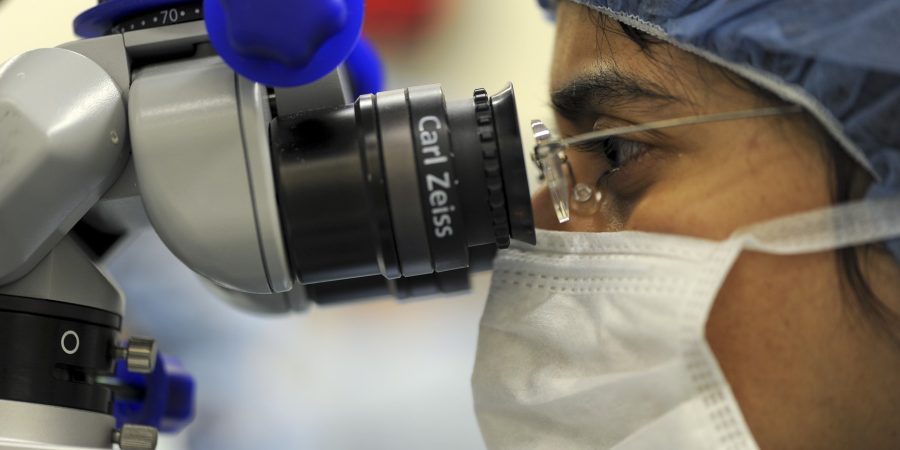Conditions

Diabetic Retinopathy
Diabetic retinopathy is a potentially blinding complication of diabetes affecting over half of Americans diagnosed with the disease. As a result of the body’s inability to use and store sugars, the tiny blood vessels that nourish the retina are affected.
Damage to the retina, the light sensitive tissue lining the back portion of the eye that transmits visual images to the brain, can result in severe loss of vision and ultimately blindness. Diabetes is the leading cause of blindness in people under the age of 65. A diabetic is 10-15 times more apt to go blind than a nondiabetic.
Long-term, uncontrolled diabetes can cause progressive damage to the eye’s retina, resulting in vision loss.
In its early stages, diabetic retinopathy is painless and often produces no symptoms. If this non-proliferative or background retinopathy leads to macular edema, you may notice a gradual blurring of your vision. Reading and other close work may become more difficult.
If the abnormal blood vessels bleed, vision may become spotty, hazy or disappear completely.
But because diabetic retinopathy often causes no symptoms, even in advanced cases, it is very important to have a yearly dilated eye exam.
The disease can be treated and vision loss prevented, if diagnosed early enough.
To better see inside the eye, we may dilate (widen) your pupil with eye drops. Your eyes will be more sensitive to light for a brief time after a dilated eye exam, so bring sunglasses to your exam or have someone drive you home.
- Nsectetur cing elit.
- Suspe ndisse suscipit sagittis leo.
- Entum estibulum dignissim posuere.
- If you are going to use a passage.
Patient Frequently Asked Questions
Fluctuation in blood sugar levels in diabetic patients leads to an increased risk in diabetic retinopathy. In the early stages, vessels in the retina swell and begin to leak into surrounding tissue. Vision is rarely affected during this stage. In the more advanced stages, new blood vessels begin to grow on the retina. These abnormal blood vessels cause blurred vision, resulting in the formation of scar tissue which can lead to permanent vision loss.
Symptoms range from none at all in the early stages, to blurry or fluctuating vision affecting both side and central vision. Spots, which are small specks of blood, often appear in your vision. As the leakage progresses, vision becomes cloudy and blind spots can occur. If left untreated, diabetic retinopathy can cause blindness.
Diabetic retinopathy can be detected during a comprehensive eye examination during which your eye doctor examines the health of your retina using specialized instruments and lenses. Once detected, your doctor may recommend additional testing to assess the progression of the disease and determine treatment. Individuals who have been diagnosed with diabetes or have a family history of the disease should have their eyes examined on a regular basis to prevent loss of vision.
There are two very effective treatment options for patients diagnosed with diabetic retinopathy: laser therapy and vitrectomy surgery. Treatment with the laser, known as photocoagulation, seals leaking blood vessels and removes new growth. The vitrectomy procedure removes the cloudy vitreous replacing it with a saline solution.
Although these surgical modalities do not cure diabetic retinopathy, if treatment is performed before the retina is severely damaged, patients have a 90 percent chance of maintaining their vision. Early detection and management is important because once damage has occurred, the effects are usually permanent.


